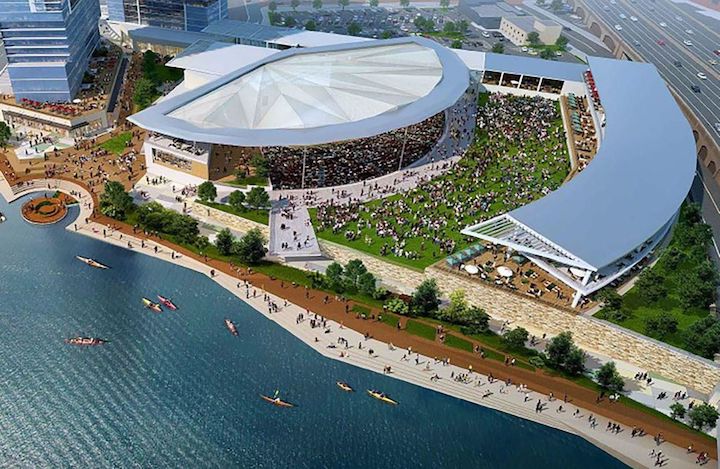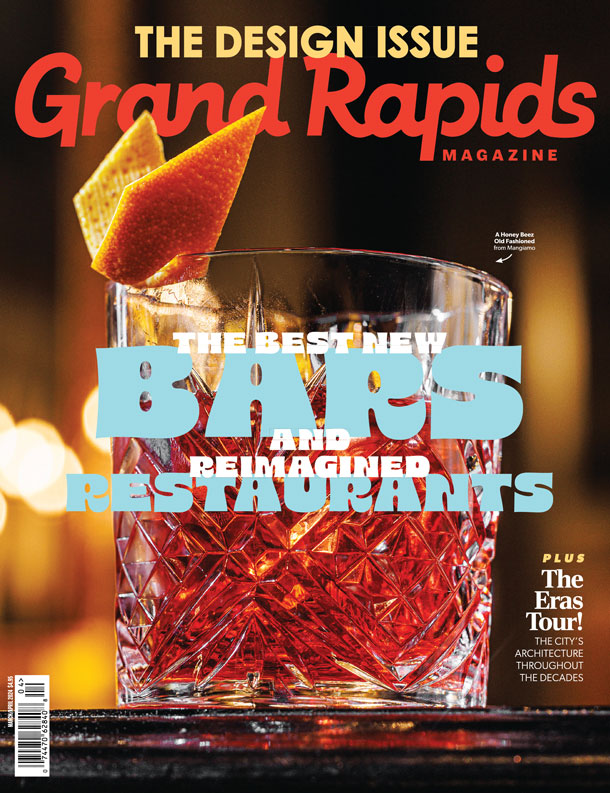This spring, a major development along the banks of the Grand River in downtown Grand Rapids stirred plenty of excitement.
The city approved the sale of an 11.6-acre property at 201 Market Ave. SW in April. That site could be home to a 12,000-seat amphitheater that would host a huge array of musical acts that come through town and help further activate the Grand River in the downtown area.
The Grand Rapids-Kent County Convention/Arena Authority must secure the $116 million needed for the purchase, but the deal could be yet another transformational project for the city — much like the CAA’s Van Andel Arena was just over 25 years ago.
The amphitheater would be a part of a larger 31-acre development featuring 1,750 apartments, retail space and more green space between Fulton and Wealthy streets along the Grand River.
There’s hope, including from Mayor Rosalyn Bliss, that construction on the Grand Rapids Whitewater river restoration project could start within the year, setting off a domino effect of major public-private projects ready to reshape the riverfront.
“I’m still hopeful that we’ll be in the river within the next 12 months,” Bliss said. “Then you have the 201 Market development. We’ve been talking about moving the city off of that 18-acre lot along the river for decades. We know it’s not the highest and best use. If we’re able to move forward with a 12,000-seat amphitheater and a park and a pedestrian bridge over to the West Side, that is going to be a huge catalyst for that entire southeast part of downtown.”
Beyond those two projects, there also is a project to connect trails along the Grand River, including a section from Leonard to Ann streets that would connect Lyon Square to the White Pine Trail. A hiker or bicyclist could go from downtown Grand Rapids all the way to Cadillac. Another connection to the west side of the river could take someone from downtown to Lake Michigan.
“When you take those three significant public-private projects together, you have not only hundreds of millions of dollars’ worth of investment, but we know that that kind of investment will drive additional economic development,” Bliss said. “But (it) also will support all of our small businesses that are currently here. And it’ll create additional vibrancy, kind of like what we’ve seen happen at Studio Park.”
Public-facing projects like the amphitheater that would help make the river the city’s focal point — rather than just a namesake — excite the leaders at Grand Rapids Whitewater, the organization leading the efforts to restore the Grand River to a more natural state.
“We’re so in the weeds with the technical elements, when you back out to the ‘50,000-foot level’ and look at the improvements to parks and trails and green spaces, granted it happens over 20, 30 years, if these projects come to fruition it’s an incredible asset to West Michigan,” said Matt Chapman, project manager for Grand Rapids Whitewater. “We really have an opportunity to bring nature and these outdoor environments to the downtown urban setting.”
While the public gets excited over the potential for projects like the amphitheater, it’s the river restoration project that truly has spurred the riverside development talk over the past decade.
For years, the project has been sort of a pie-in-the-sky dream, including for founders Chris Muller and Chip Richards. Now, however, those big ideas are gathering speed.
The project is currently in the permitting process with seven state and federal agencies. One permit was awarded as of March, which is a federal permit to work around endangered mussels.
“They’re just complex processes with a lot of laws and a lot of interpretations of laws,” Chapman said.
With planning largely finished, the permitting is a huge milestone, he said.
The first construction project is the Lower Reach section, which stretches from Bridge Street to Fulton Street, and removes four dams while installing new rocks and boulders. The funding and design processes for the Lower Reach are completed.
The second construction project is the Upper Reach, from Ann Street to Bridge Street, that would remove another dam and surface some limestone bedrock, while ensuring invasive species control. A crucial piece of the Upper Reach is underway to evaluate alternatives to control the invasive sea lampreys.
In all, the project would return the Grand River to a more natural state, which helps the aquatic habitat, while also creating more recreational opportunities for humans and creating a more vibrant atmosphere for Grand Rapidians. An Anderson Economic Group study projects the development could create a $15 million to $19 million annual economic impact with another $250 million in capital investments in the 10 years following its competition.
There will be public hearings for construction pieces moving forward, which Chapman said would benefit from community support. He also said at some point, public participation might be needed to help with endangered mussel relocation, which he said also would be a form of community education.
The river restoration project has been a lot of work for those involved, and a lot of waiting for the rest of the community. Now, the reality could be here soon, which might happen at a rapid clip.
“We hope it’s one of those go-slow-to-go-fast situations,” Chapman said.
This story can be found in the May/June 2022 issue of Grand Rapids Magazine. To get more stories like this delivered to your mailbox, subscribe here.












Facebook Comments